This liqueur is a sweetened and flavored drink made from carob, obtained through the technique of maceration of fruit for a specific period of time. After that period, the brandy is filtered and sugar syrup is added.
The carob tree or St. John´s bread tree, is typical for the Algarve. In Portuguese, the tree is called Alfarrobeira and the fruit of this tree is called Alfarroba.
The carob tree
The carob tree is a member of the legume (pea) family, is a flowering evergreen tree or shrub. It is a large tree and grows to 15m in 50 years. The tree’s crown is broad and semispherical, supported by a thick trunk with rough brown bark and sturdy branches. Its leaves are 10 to 20 cm long, alternate, pinnate, and may or may not have a terminal leaflet. It is frost-tolerant to roughly −7 °C.
It produces no fruit for the first 15 years of its life but will fruit well into its old age. A large tree can produce one ton of beans in one harvest. Contrary to the orange trees, carob trees do not need much water.
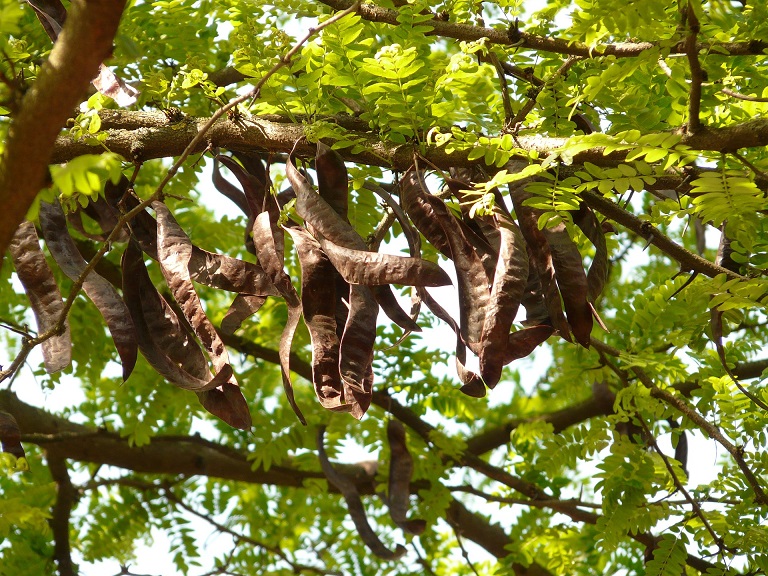
The carob tree flowers in September and October. Each carob tree is a single-sex, so it takes a male and female tree to produce carob pods. A single male tree can pollinate up to 20 female trees. After six or seven years, a carob tree is able to produce pods. Once a female carob tree is fertilized, it produces hundreds of pounds of dark brown pods filled with brown pulp and tiny seeds. The pods are about 1/2 to 1 foot in length and about an inch wide.
The fruit is a legume, that is elongated, compressed, straight, or curved, and thickened at the sutures. Developing carob pods have the appearance of green broad beans but they turn a dark glossy brown with maturity. It takes a full year for the pods to develop and ripen.
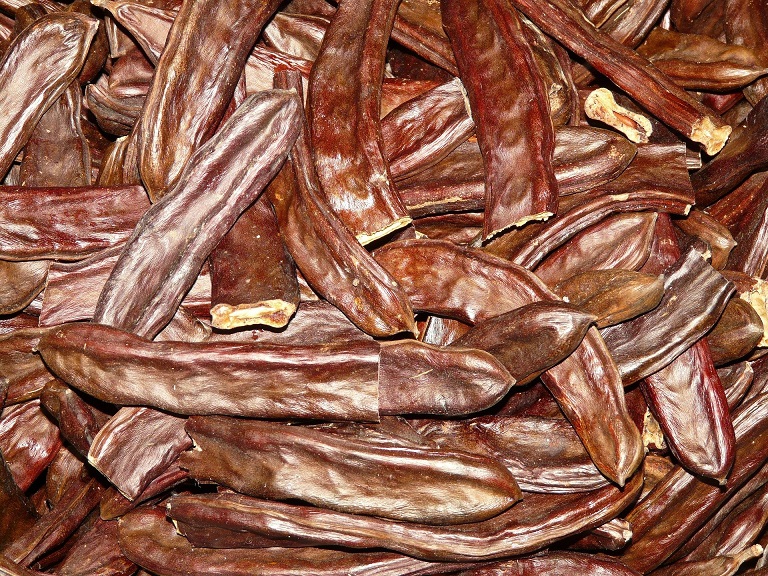
It is widely cultivated for its edible pods, and as an ornamental tree in gardens and landscapes. The carob tree is native to the Mediterranean region and the Middle East.
Carob trees can survive long periods of drought, but to grow fruit, they need 500 to 550 millimeters of rainfall per year. They prefer well-drained, sandy loams and are intolerant of waterlogging, but the deep root systems can adapt to a wide variety of soil conditions and are fairly salt-tolerant.
The most labor-intensive part of carob cultivation is harvesting in the fall, which is often done by knocking the fruit down with a long stick and gathering them together with the help of laid-out nets. This is a delicate task because the trees are flowering at the same time and care has to be taken not to damage the flowers and the next year’s crop.
After harvest, carob pods have a moisture content of 10–20% and should be dried down to a moisture content of 8% so the pods do not rot. Further processing separates the seeds from the pulp. This process is called kibbling and results in seeds and pieces of carob pods (kibbles). The seeds have to be peeled which happens with acid or through roasting.
Consumption
Carob seeds and pods are edible. The ground seeds are used as a substitute for cocoa and as food, the pods are commonly used as cattle feed. Carob powder is also used as a food stabilizer and as a darkening agent.
In the Algarve, carob powder is used in baking as an alternative to chocolate and is also known by the name cacao do Algarve. which is sometimes used to replace cocoa powder. Carob bars (an alternative to chocolate bars), as well as carob chips (an alternative to chocolate chips), and carob treats are often available in health food stores. Carob pods are naturally sweet, not bitter, and contain no caffeine. The carob products will generally contain substantially less sugar than their chocolate counterparts.
Carob cookies with carob chips are similar to chocolate chip cookies. Carob candy looks like chocolate. Carob pods are mildly sweet on their own, so they are used in powdered, chip or syrup form as an ingredient in cakes and cookies.
While chocolates are toxic to some mammals, carob also has no caffeine, so it is sometimes used to make chocolate-like treats for dogs.
Carob is used for compote, liqueur, and syrup in Turkey, Malta, Portugal, Spain, and Sicily.
Carob is available to buy as:
– powder
– chips
– syrup
– extract
– dietary pills
You can eat carob pods when they’re fresh or dried, too.
The most common use for carob is in food. Carob tastes similar to chocolate and is a great alternative because it has:
– a lot of fiber
– antioxidants
– low amounts of fat and sugar
– no caffeine
– no gluten
Because the carob is naturally sweet, it can help satisfy your sugar cravings.
When cooking, you can substitute carob for chocolate in a 1-to-1 ratio. If you’re lactose-intolerant or choose to be vegan, carob is also a great dairy-free alternative.

Carob is in many skincare products and medications. Carob gum is mainly used in cosmetics as:
– an adhesive or binder
– a stabilizer for liquids
– a fragrance
– a texture enhancer
Many companies use carob gum to enhance the texture of food. You can find carob gum in many processed foods, such as baked goods, salad dressings, and meat products.
Ways to use carob:
– add carob powder to smoothies
– sprinkle carob powder on yogurt or ice cream
– add carob powder to your favorite bread dough or pancake batter
– make a hot carob drink instead of hot chocolate
– make creamy carob pudding
– replace candy bars with carob bars made of carob powder and almond milk
– make carob brownies
Benefits
Using it for health benefits goes back 4,000 years to ancient Greece.
People who add carob to their diet have seen benefits like weight loss and decreased stomach issues.
The 19th-century British chemists sold carob pods to singers. Chewing on carob pods helped singers maintain healthy vocal cords and soothe and cleanse their throat.
1. Naturally low-fat
Carob powder contains virtually no fat. If you’re on a low-fat diet, carob powder is a good option. Just keep in mind that it’s higher in sugar and carbs than cocoa powder. One cup of carob powder has 51 grams of sugar and less than 1 gram of fat.
2. Low in sodium
Carob powder contains no sodium. It’s a great option for people following a low-sodium diet.
3. Contains calcium, but no oxalates
Calcium is a mineral. It’s important for bone health. It also helps your heart, nerves, and muscles function well. Two tablespoons of carob powder have 42 mg of calcium.
Cocoa contains oxalates, compounds that reduce your body’s ability to absorb calcium. A diet high in oxalates also increases your risk of developing kidney stones. Carob powder contains no oxalates.
4. High in fiber
Two tablespoons of carob powder have almost 5 grams of fiber. A 2010 study found that the antioxidant polyphenols in carob insoluble fiber lowered total cholesterol and LDL (bad) cholesterol in people with high cholesterol.
5. Gluten-free
Gluten is a protein found in wheat, barley, rye, and triticale. In some people, gluten triggers their immune system to attack the small intestines. This condition is called celiac disease. If you have celiac disease or are sensitive to gluten, you must avoid gluten-containing foods. Carob powder is gluten-free.
6. Helps relieve diarrhea
Thanks to its tannin content, carob powder has been used as a natural remedy for diarrhea. Tannins are polyphenols found in some plants. The researchers suggest that administering tannin-rich carob powder with a fluid is safe and effective for treating acute-onset diarrhea in infants aged 3 to 21 months.
7. Caffeine-free
Caffeine is a great pick-me-up, but too much may cause unpleasant side effects. Carob powder contains no caffeine. This is good news for caffeine-sensitive people looking for a chocolate substitute.
8. Good source of antioxidants
According to a study, carob fiber is a rich source of polyphenol antioxidants. The study identified 24 polyphenol compounds in carob fiber, mainly flavonoids. And the flavonoids have been shown to reduce oxidative stress. Research has shown that flavonoids have anti-inflammatory, anticancer and antidiabetic abilities.
9. Free of tyramine
Tyramine is a byproduct of tyrosine, an amino acid. According to research, foods that contain tyramine may trigger migraine headaches. Carob doesn’t contain tyramine and is considered safe to eat if you get migraines.
The carat
Since the seeds of the carob tree all weigh the same, they were used to weigh diamonds, silver and gold in the Middle East. The word “carat” refers to the official name of the carob tree: Ceratonia Siliqua. The system was eventually standardized, and one carat was fixed at 0.2 grams.
In late Roman and early Byzantine times, the pure gold coin known as the solidus weighed 24-carat seeds (about 4.5 grams). As a result, the carat also became a measure of purity for gold. Thus 24-carat gold means 100% pure, 12-carat gold means the alloy contains 50% gold, etc.
Producing
Another interesting detail is that rumor says that alfarroba is one of the secret ingredients of Coca Cola.
Ancient Greeks were the first to grow carob trees, which are now grown all over the world, from India to Australia. The tree is also seen in southern and eastern Spain, mainly in the region of Valencia; Malta, on the Italian islands of Sicily and Sardinia, in Croatia, Bulgaria, Greece, Cyprus, as well as on many Greek islands such as Crete.
Portugal produces around 40.000 tons of alfarroba per year, most of which is exported. This is a 32 million euro business. Only Marokko produces more, but the Portuguese claim to have the best quality.
Summarizing, carob powder is a healthy alternative to cocoa powder, although minimally processed cocoa powder has some health benefits of its own. Since carob powder is naturally sweet, there’s no need to add sugar or other sweeteners when using it in your favorite recipes. Carob powder is generally considered safe to eat.

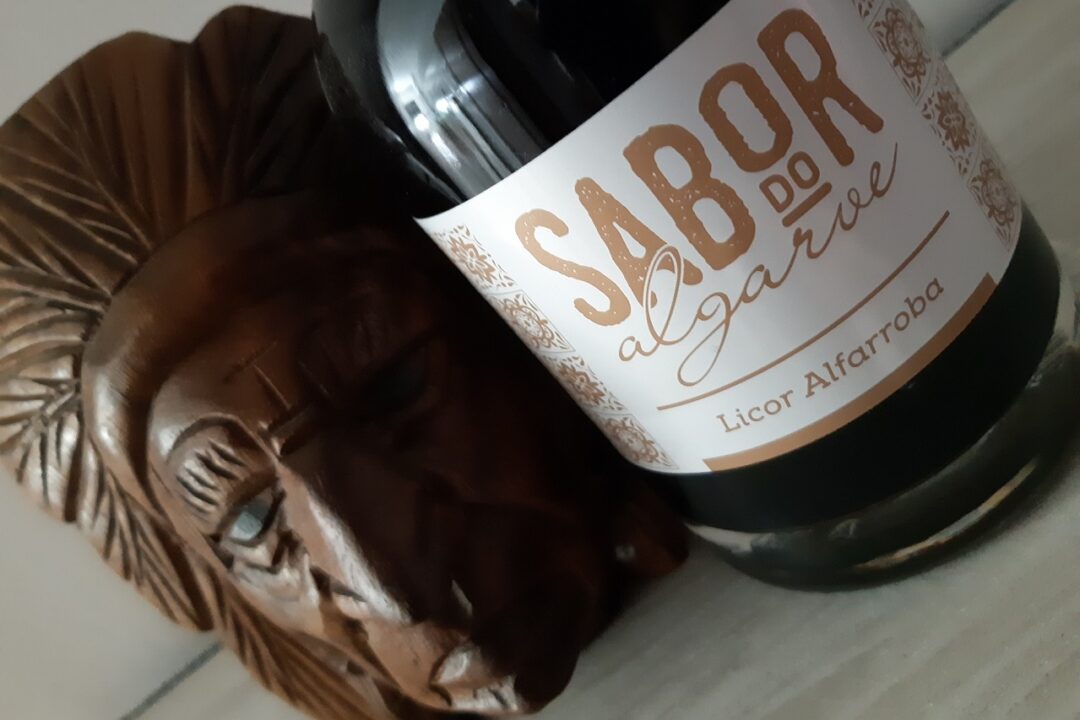
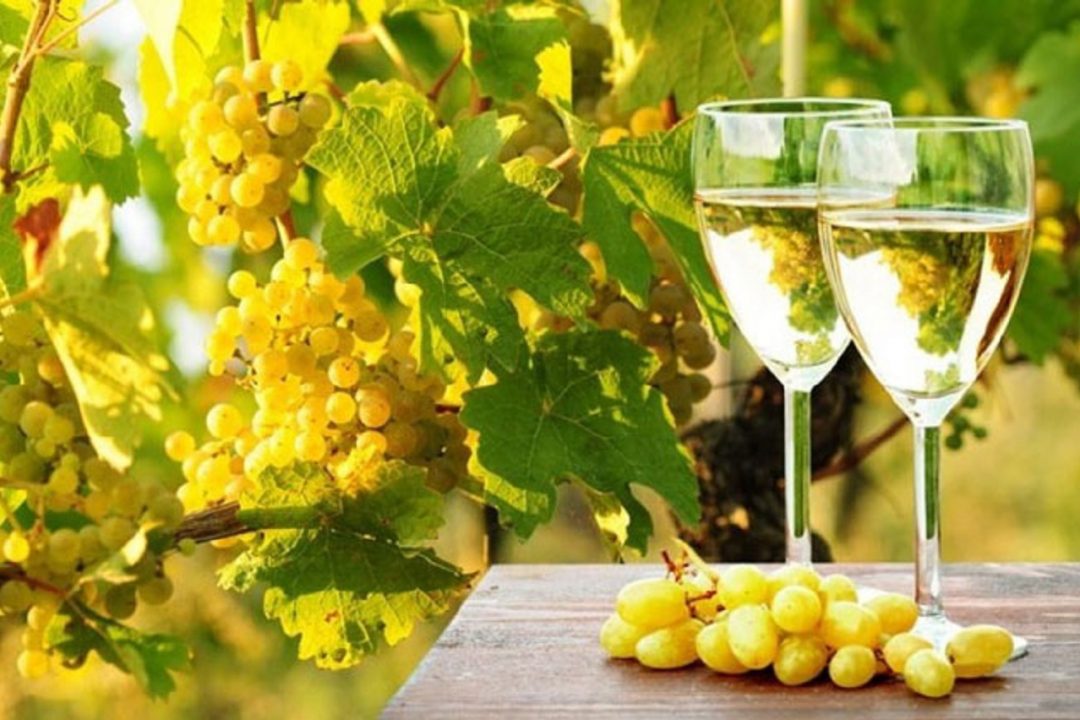

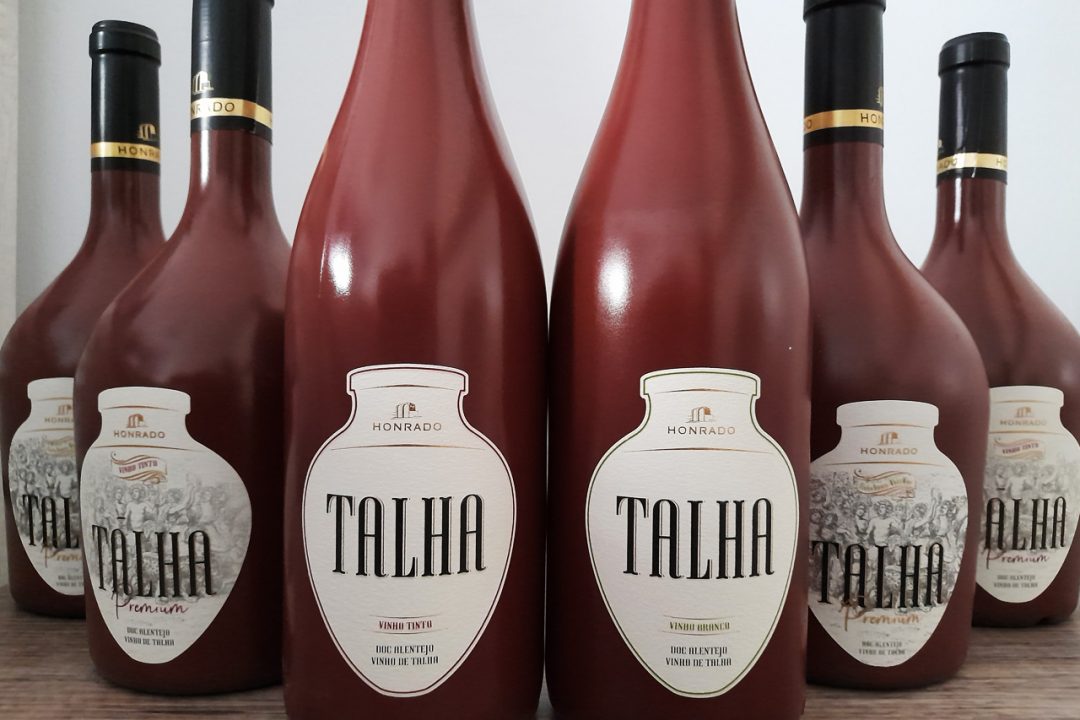

No Comments Found